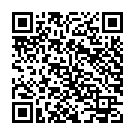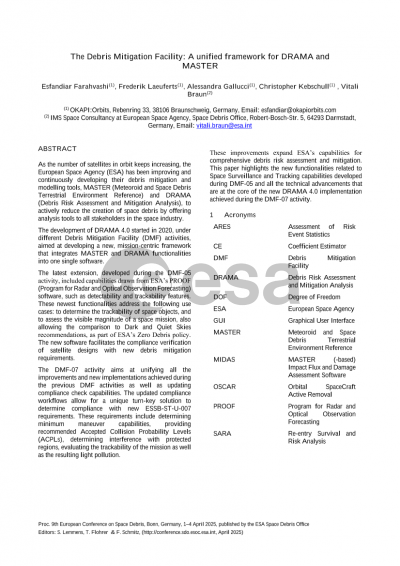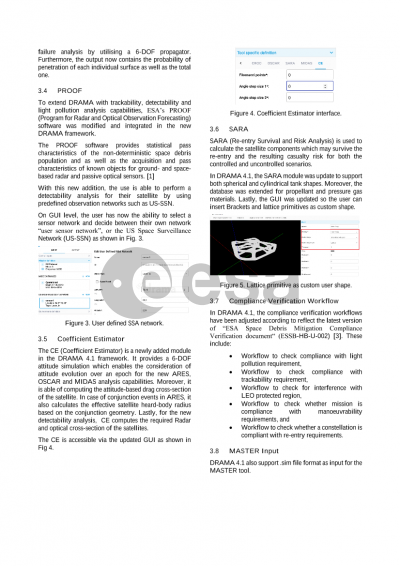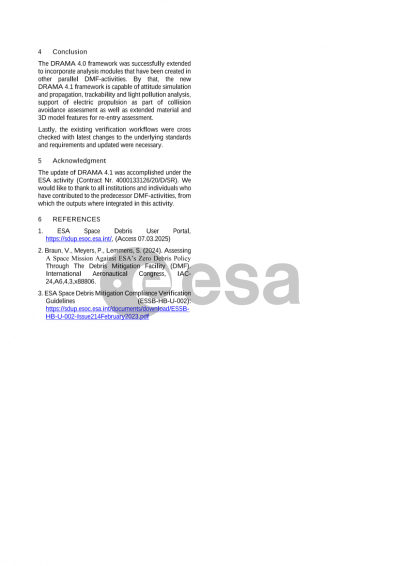Document details

Abstract
As the number of satellites in orbit keeps increasing, the European Space Agency (ESA) has been improving and continuously developing their debris mitigation and modelling tools, MASTER (Meteoroid and Space Debris Terrestrial Environment Reference) and DRAMA (Debris Risk Assessment and Mitigation Analysis), to actively reduce the creation of space debris by offering analysis tools to all stakeholders in the space industry.
The development of DRAMA 4.0 started in 2020, under different Debris Mitigation Facility (DMF) activities, aimed at developing a new, mission-centric framework that integrates MASTER and DRAMA functionalities into one single software.
The latest extension, developed during the DMF-05 activity, included capabilities drawn from ESA’s PROOF (Program for Radar and Optical Observation Forecasting) software, such as detectability and trackability features. These newest functionalities address the following use cases: to determine the trackability of space objects, and to assess the visible magnitude of a space mission, also allowing the comparison to Dark and Quiet Skies recommendations, as part of ESA’s Zero Debris policy. The new software facilitates the compliance verification of satellite designs with new debris mitigation requirements.
The DMF-07 activity aims at unifying all the improvements and new implementations achieved during the previous DMF activities as well as updating compliance check capabilities. The updated compliance workflows allow for a unique turn-key solution to determine compliance with new ESSB-ST-U-007 requirements. These requirements include determining minimum maneuver capabilities, providing recommended Accepted Collision Probability Levels (ACPLs), determining interference with protected regions, evaluating the trackability of the mission as well as the resulting light pollution.
The framework supports new functionalities directly within the new Graphical User Interface (GUI) that has been developed for DRAMA 4.0, unifying MASTER and DRAMA analysis modules under one frontend. Other implementations within this software solution are the new electric propulsion, drag augmentation withing the ARES (Assessment of Risk Event Statistics) module and the new attitude propagation functionalities in OSCAR (Orbital Spacecraft Active Removal) and MIDAS (MASTER-based Impact and Damage Assessment Software).
These improvements expand ESA’s capabilities for comprehensive debris risk assessment and mitigation. This paper highlights the new functionalities related to Space Surveillance and Tracking capabilities developed during DMF-05 and all the technical advancements that are at the core of the new DRAMA 4.0 implementation achieved during the DMF-07 activity.
Preview





